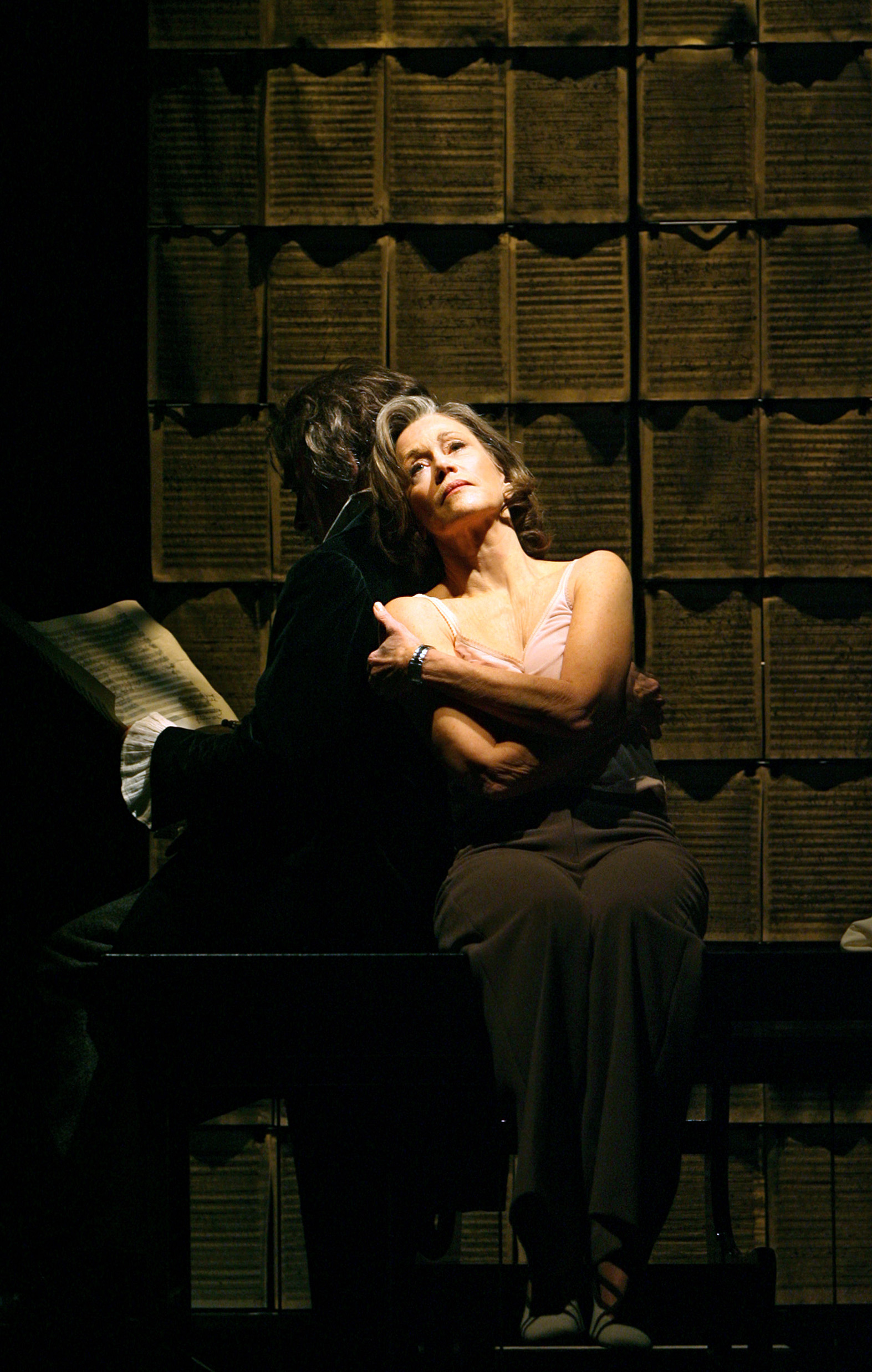Theater Review

"33 Variations"
Ahmanson Theatre
Through March 6
![]()
![]()
![]()
By Arit John
Feb. 14, 2011 3:27 a.m.
The idea of variation in music involves taking an element from a song ““ a melody, a harmony ““ and altering it in some way. Or, as Dr. Katherine Brandt (Jane Fonda), the obsessive musicology professor in “33 Variations,” says during the play, a variation is about changing something into a better version of itself.
“33 Variations” is rich with musical theory. At times the dialogue seems better suited for a lecture hall in Schoenberg Hall than a theater stage, but the play somehow manages to avoid getting bogged down by historical analysis, thanks to its humor and the tender way in which it treats the works of Ludwig van Beethoven.
Brandt is a musicology professor whose love affair with her work far exceeds the affection she shows to her adult daughter Clara (Samantha Mathis). Brandt’s latest obsession is discovering the mystery behind Beethoven’s 33 variations on a seemingly insignificant waltz by composer Anton Diabelli. Regardless of her diagnosis of Lou Gehrig’s disease early in the play, Brandt’s work takes her to an archive of Beethoven’s work located in Bonn, Germany.
Meanwhile, in 19th-century Europe, Ludwig van Beethoven (Zach Grenier), another workaholic, plays the role of the mad genius, creating the works that secured his reputation as his hearing deteriorated to nothing.
Beethoven’s life is passed down to the 21st century through an 1840 biography written by his associate and confidant Anton Schindler (Grant James Varjas). Through “Life of Beethoven” and the notebooks full of musical rough drafts left behind, Beethoven’s obsession fuels Brandt’s.
The play interweaves these two narratives and plays with the idea that both worlds, separated by time, coexist on the stage and in the lives of the modern characters.
A two-time Best Actress Oscar winner (in 1971 and 1978), Fonda has been touted as the star of the production. Grenier’s Beethoven however, is the more interesting to watch. All of the acting is stylized and slightly over-the-top (this is a Broadway play, after all), but for all the unprovoked rages and genius-fueled mood swings his character goes through, Grenier portrayal is not groan-inducing, and that can’t be said for the cast as a whole.
Greg Keller also does well as Mike Clark, the socially awkward but nonetheless likeable nurse who grows close to the Brandt family after serving as Dr. Brandt’s nurse. Though Keller’s character is a cliche at times (while on a date with Clara Brandt, he fakes a yawn to put an arm around her shoulder ““ her response of “Old school much?” echoes the audience’s response), he is perfect for the role based on his surfer-meets-nerd-herd voice alone.
And at least part of the cheesiness of the production should be blamed on the script. There are several quips that are meant to make the audience laugh, but the buildup to them is obvious, not effortlessly woven in. The jokes feel like afterthoughts.
Thematically, “33 Variations” tries to cover a lot ““ broken mother-daughter relationships, freedom of speech in early 19th-century Europe and the destructive power all-consuming fixations can have on our social relationships.
These efforts are all covered by the play with results that range the spectrum of effectiveness. In the case of this play, it was usually the execution, not the concept itself, that did not always live up to expectations.
The moments where the play truly succeeds are almost all associated with its representation of music. The script has an appreciation for classical music that goes beyond how it sounds or how it makes you feel. The fact that a minuet “sounds pretty” or “is relaxing” is valid, but only scratches the surface of the sort of musical appreciation of which listeners are capable of. For Brandt and for Beethoven, each composition tells a story ““ chords are protagonists, and rhythms are plotlines and inside jokes between devoted listeners.
Only slightly more hit than miss, the play is an interactive experience with history and music, with a live pianist, obvious attention to historical detail and video feed that resembles PowerPoint lectures. By engaging with “33 Variations,” we see how history and music are able to create variations in, or better versions of, our own lives.


